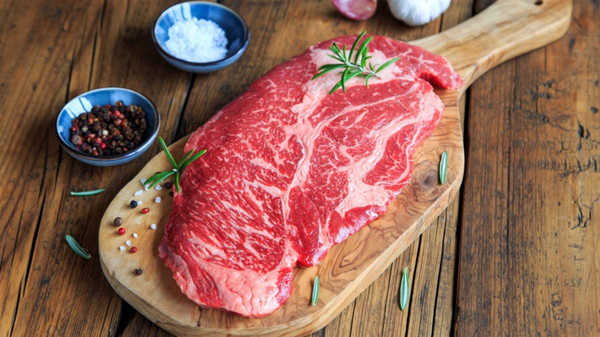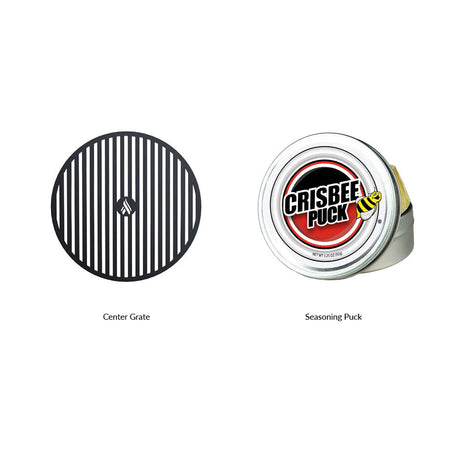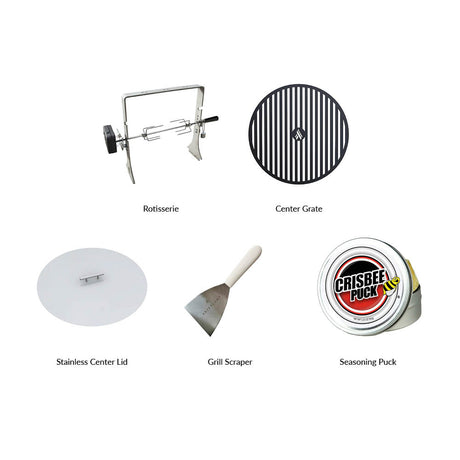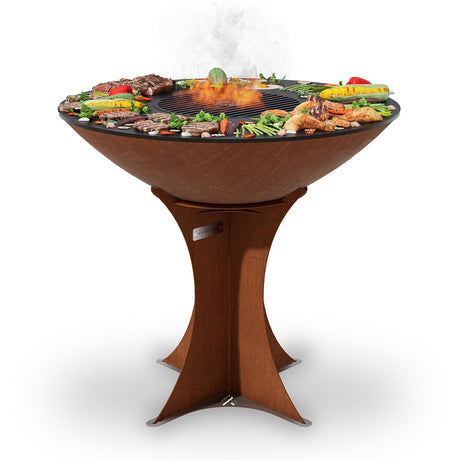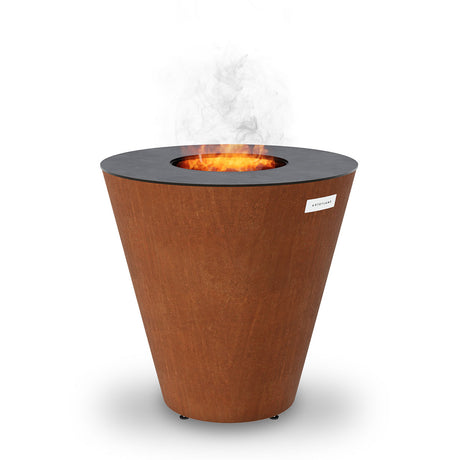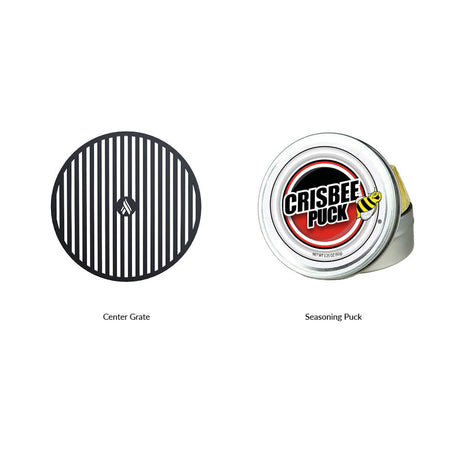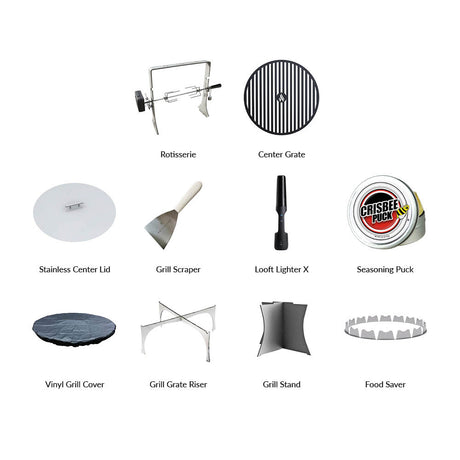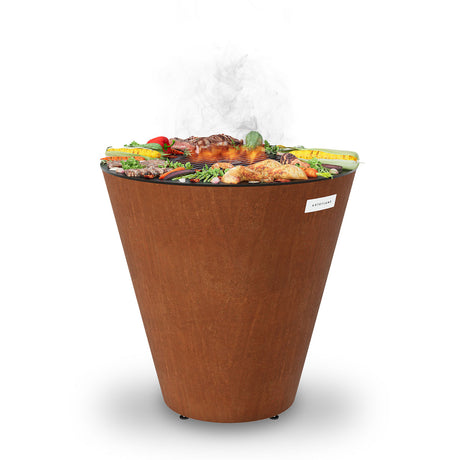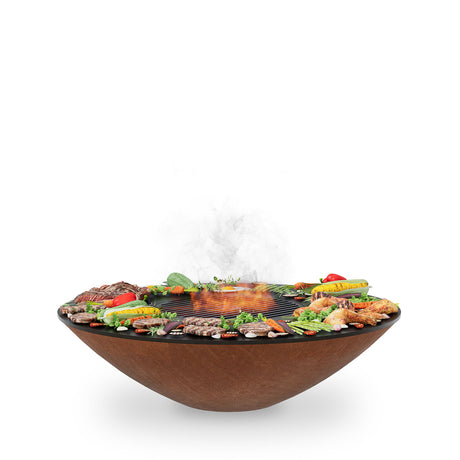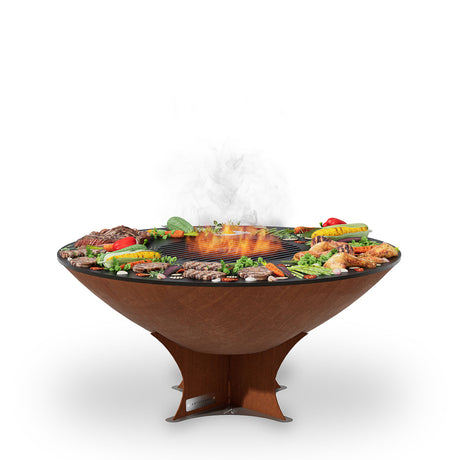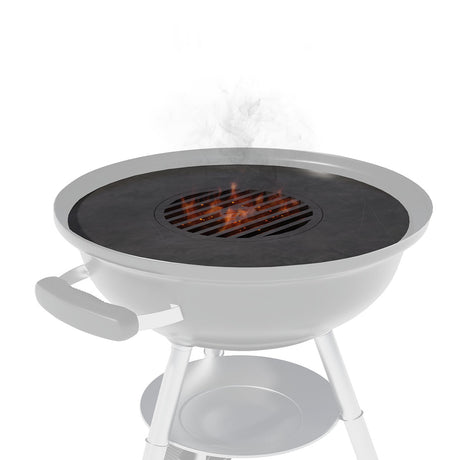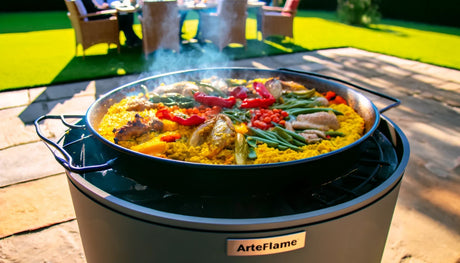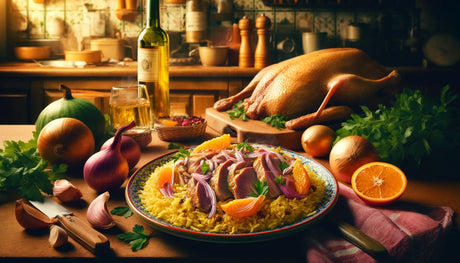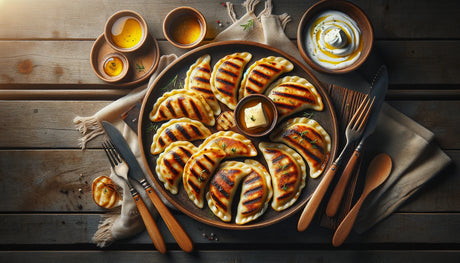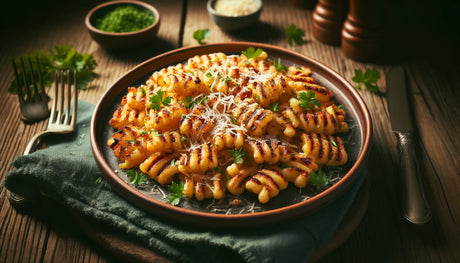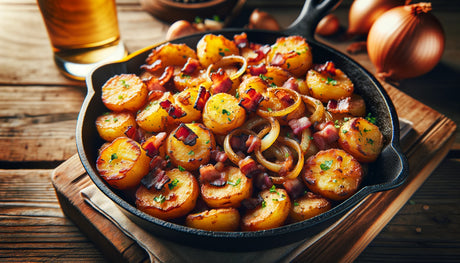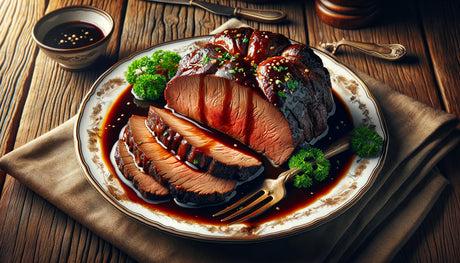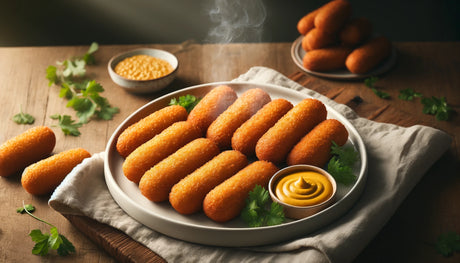The best cuts of steak to grill
Brett Llenos Smith
Is there anything like grilling a steak? Done correctly, with a cold beer as your copilot, putting beef to flame is as calm and centering as a guided mediation. The Zen Art of Carnivorism. Peace begins with steak.
As your guide on this metaphysical journey, it behooves us to say: We don't blame you if you'd prefer to plunk down a few extra bucks for the good stuff. However, there are cuts worthy of a spot on your grill that can fit any budget. Just keep in mind whether the steak you choose would benefit from a marinade or may require some extra care while cooking.
You're likely familiar with most of the chart toppers on this list. But we've also included some underrated options and some cuts that have become more popular in recent years. Come for the rib-eye, stay for the flat iron. These are the absolute best cuts of steak for a grill.
Rib-eye is the Cadillac of grilled steaks
While there are more tender cuts of steak, the rib-eye's heavy marbling makes it one of the most indulgent parts of the cow. Of course, this cut ain't cheap, and so you should at least know, in theory,
how to make the perfect rib-eye.
Start by taking your rib-eye out of the fridge or freezer and allowing it to come up to room temperature. Then, cover both sides of the steak with fresh-ground pepper and several generous pinches of salt — don't be shy with the seasoning. A rib-eye steak has lots of fat and meat that demand significant seasoning. If you're looking to get a bit extra, you can also apply your favorite store-bought steak seasoning.
After your steak has come up to temp and your grill is as hot as you can get it — at least 425 F — rub the steak with a bit of olive oil and place it on the hot grill grates to get a nice sear. After about 3 minutes, use grill tongs to flip the steak and sear the other side. After both sides have been seared, move the steak off direct heat and allow the cooking process to continue at a lower temperature. Once your steak has reached its desired temperature (which you could check using a meat thermometer), pull it off the grill and allow it to rest for at least five minutes before enjoying.
The perfect beef tenderloin takes finesse
Beef tenderloin doesn't have a ton of decadent fat, but as the steak's name suggests, it is a buttery consistency, which is why it's such a prized cut. If you're investing in one that's destined for your grill, there are a few things
you should know about tenderloin steak. Both the beef tenderloin cut and filet mignon come from the same muscle. The main difference is that filet comes from the more desirable skinny end while tenderloin is the term used for the entire cut.
Tenderloin can be purchased trimmed or untrimmed, with an untrimmed steak still having the chewy
silver skin attached. If you have an untrimmed steak, you should remove the silver skin before grilling. Cut the tenderloin into smaller filets. Because tenderloin doesn't have a lot of fat, a common technique for grilling it involves wrapping the round part of tenderloin filets in bacon. Season both flat sides of the filet with salt, pepper, and — if you prefer — a dry rub. Because the steaks themselves have so little fat, it is important not to overcook them. Sear each side for about 2 minutes and finish on indirect heat until your tenderloin steaks reach the desired temperature (via
The Meat Source). For an added touch, top with butter before allowing it to rest.
Get two steaks in one with a porterhouse
If you
know about porterhouse steak, you're familiar with the signature T-shaped bone running down the middle. Because of that bone, this steak often gets confused with T-bone steak, and the two are quite similar: Porterhouse steaks are essentially larger versions of T-bones.
In both steaks, that bone actually separates two smaller cuts: filet and strip. This is important to note because each of these smaller cuts cooks differently. Filet is the larger of these "sub cuts" and it is extremely tender but low in fat, making it susceptible to overcooking. The smaller strip steak has a higher fat ratio, meaning this side of the steak is less vulnerable to overcooking.
Because each side of a porterhouse has different cooking needs, you need to pay attention when cooking it. Start by seasoning each side with generous amounts of salt and pepper. We recommends rubbing a clove of garlic on each side to enhance the flavor, but you could also apply your favorite steak seasoning. After the steak has come up to temp, sear each side over a hot grill for about 2 minutes, and then move the steak over to indirect heat, with the filet side facing the coolest part of the grill. After it reaches the desired temperature, pull the steak off the grill and let it rest for 5 minutes.
You can't go wrong with the iconic T-bone
With its eponymous T-shaped bone running down the middle, the T-bone steaks is essentially a smaller version of a porterhouse steak. Because the porterhouse can be a massive serving size, T-bones are great if you want a similar, but more manageable experience.
Like a porterhouse, the T-bone has a filet on one side of the bone and a strip steak on the other. This is the main thing
you should know about T-bone steak. Because each of these smaller cuts contains different fat contents, they cook differently. One approach to dealing with the difference in optimal cook times is to find a steak with a relatively fatty filet side. Another technique is to always ensure the fattier strip side is always facing the hotter part of the grill, while the filet side is always furthest away from direct heat.
If you're grilling steaks for other people or you are looking to show off on Instagram, a T-bone gives you the opportunity for a great presentation. After the steak is cooked and rested, use a knife to cut both the filet and the strip steaks away from the bone. Then, holding your knife at a 45-degree angle, cut each steak widthwise into slices. Finally, place each sliced cut back in its original location relative to the bone in a classic T-bone presentation.
Get Big Apple vibes with a NY strip steak
This tender and flavorful cut provides great bang for the buck. The NY strip — or just strip steak — has less marbling than the rib-eye, and it isn't as tender as a filet. However, it has a strong beefy flavor that more than makes up for its lack of fat and tenderness.
Because the strip steak doesn't have a ton of marbling, it does benefit from a bit of olive oil along with your preferred seasoning. While you could just stick with salt and pepper, the flavor of a strip steak can be enhanced with a rub of rosemary, garlic, and shallots. If you want the full steakhouse experience, you should make sure to prepare some
steak side dishes, whether you cook up classics like creamed spinach and mashed potatoes or more contemporary options such as elote (Mexican street corn) and dandelion greens.
Make a fashionable choice: skirt steak
Often used to make fajitas, skirt steak has been enjoying more popularity these days, and this cut can be a great change of pace. Because skirt steak is made up of many different muscle fibers, it is typically subjected to a marinade for at least 30 minutes. This infusion of flavor takes your steak game beyond the typical salt, pepper, and steak seasoning spice blends.
Common marinades for skirt steak incorporate some type of acid, usually citrus juice or vinegar. This helps to break down the muscle fibers while also adding sour notes to the steak. If you're looking for an
herby skirt steak recipe, use a marinade with lemon juice, lemon zest, olive oil, garlic, shallot, herbs, and red pepper. Or you could go outside the box with a
miso-marinated skirt steak that includes soy sauce, sesame oil, chili-garlic sauce, sugar, ginger, and garlic.
Even after a good marinade, there's still work to be done
to ensure your skirt steak doesn't turn chewy. After your steak comes up to room temperature, sear each side for no more than two minutes apiece. The ideal temperature for skirt steak is medium rare, so a bit of time under indirect heat may be necessary, but you'll want to avoid going anywhere past medium.
Top sirloin is a lean and mean cut
Many people love the flavor of a steak, but for health reasons, are trying to minimize their fat intake. For these folks, top sirloin is a great grilling option. According to
Healthline, top sirloin is lean and low in saturated fats. Even better, it is priced more affordably than fattier cuts.
The low fat content in a top sirloin steak also means you need to be careful when cooking it. After your steak has been seasoned and brought up to just below room temperature, sear it on each side for 2 to 3 minutes. Then, place your top sirloin steak on indirect heat until it's about 5 degrees below your target temperature, which is about 125 degrees F (via
Omaha Steaks). One thing you absolutely don't want to do is
overcook a sirloin steak. Because top sirloin steaks don't have a lot of fat, they can benefit greatly from being served a homemade sauce, such as a great
chimichurri sauce recipe.
Don't keep flank steak on the sideline
Fatty or tender cuts of beef tend to shine with subtle seasoning. Any bold herb and spices can completely mask what people love about these cuts. For example, covering filet mignon with a robust chimichurri sauce would be a waste of both the steak and the sauce.
Flank steak isn't particularly tender and doesn't contain a lot of fat. However, it does have a pronounced beefy flavor that plays well with bold seasonings. A flank steak will greatly benefit from time in a marinade. A simple
3-ingredient steak marinade recipe includes balsamic vinegar, olive oil, and soy sauce. Even after several hours in a marinade, you should take care not to cook a flank steak past medium, or else you'll end up with a chewy piece of meat.
Chuck eye is the poor man's rib-eye
Chuck eye steak is a great lower-cost alternative to rib-eye that still has it where it counts. Chuck eye is often compared with rib eye because both cuts come from the ribs of the cow. While rib-eye steaks come from the sixth through the 12th ribs of the cow, the chuck eye comes from the fifth rib. Because it come from the 5th rib, there are only two steaks per animal, and because of this, these steaks can be difficult to find.
While it is slightly inferior in quality and not as tender,
chuck eye steak makes a great alternative to rib-eye. The price difference between the two steaks can be substantial and the chuck eye steak only requires a bit of extra love to deliver exceptional flavor. While this cut does have significant marbling, it still should not be cooked much past medium rare. Additionally, most people marinate chuck eye steaks to ensure that they are tender.
Because the labeling of steaks can be somewhat sketchy, it's important to make sure your chuck eye is boneless and is cut like a standard-sized steak before buying it. If it's particularly thick and contains bones, it's likely a chuck roast which is better off being braised in a crock pot than cooked on a grill.
Straighten the wrinkles in your dinner plans with a flat iron steak
As the price of beef has gone up in recent years (via
Bloomberg), less expensive cuts have gotten more attention. Coming from the shoulder of the cow, flat iron steaks are a great example of a moderately-priced steak that's gotten popular in recent years. In fact, this cut has become quite fashionable, with upscale grocery stores like Whole Foods making flat iron steaks more widely available.
One thing that
you should know about flat iron steak is that it is particularly well-suited to the high heat of a backyard grill thanks to significant marbling. Because it's already loaded with flavor, there's no need to hit this cut with bold seasonings. A simple marinade, oil basting, or just salt and pepper is all you need to do. Avoid cooking these steaks anything past medium, as they will eventually dry out and become chewy. It's also important to cut the steak against the grain to optimize the tenderness of each bite.
Give tri-tip steak a shot on your grill
Having flown under the radar of most grillmasters for decades, tri-tip steak has gained a cult following, especially among professional chefs. In a recent interview, Washington DC chef David Guas told
Thrillist that tri-tip steak is the most underrated steak on the market.
Famously, it's a standard of Santa Maria-style barbecue which is why
tri-tip steak is often associated with California. Fans of tri-tip praise it for its ability to caramelize and absorb smoky flavors. That said, this cut does require a bit of finesse in order to get the most out of it. Because it has a modest amount of fat, the steak benefits from a dry rub or marinade. Also, resting is a critical part of the overall cooking process. Tri-tip steak tends to be tight after being cooked, and a 10- to 15-minute resting is essential to allow it to properly relax and tenderize.
Picanaha is the foreign import your grill has been waiting for
Although this cut tends to fly under the radar in the United States, picanha steak is incredibly popular in Brazil. In recent years, however, greater awareness of Brazilian barbecue in the United States has led to this steak gaining an American following.
With significant marbling and a thick fat cap on one side of the steak, it's easy to see why the picanha cut has become so popular. All of that fat means the steak is fairly easy to grill. Start by cooking using indirect heat to render the fat, turning the steak occasionally to ensure even cooking. After the fat cap has turned a golden brown, the steak should be basted with oil and seared using direct heat.
If you're looking to take a more typical Brazilian approach, place curved pichanha steaks on skewers so that they form a 'U' shape, with the fat cap sides of the steaks touching each other. This cooking method requires the steaks to be slowly rotated and basted as they cook.
Denver steak is a diamond in the rough
Back the 2000s, researchers at Colorado State University's Center for Meat Safety & Quality were looking for a way to upgrade low-value steaks, when meat scientist Dale Woerner identified a shoulder cut that had previously been ignored.
The cow's shoulder area, also known as the chuck area, is known for tasty cuts. However, these cuts then tend to have a lot of connective tissue that is typically broken down with low-and-slow cooking. However, the meat surrounding a bone in the shoulder has much less connective tissue, making it an ideal steak.
Because there is a significant amount of connective tissue in a Denver steak, a sear-it-and-forget-it approach isn't the best strategy. Rather, this cut benefits hugely from either a reverse sear or sous vide cooking. These methods involve cooking the steak slowly at first to break down some connective tissue and then finishing with a sear. To reverse sear on your grill, start by cooking the steak with indirect heat until it reaches around 100 F. If you're going with a sous-vide method, cook the steak for 2 hours at 130 F, and then finish with a quick sear on each side. As with other lesser cuts of steak, it's important to cut a Denver steak against the grain after a long rest.








